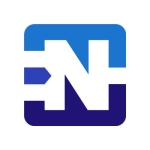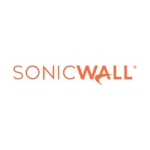What is our primary use case?
For our customers, Firepower is a classic perimeter firewall. Sometimes it's also for branch connections, but for those cases, we prefer Meraki because it's simpler. If a customer has Meraki and requires advanced security features, we will offer Firepower as a perimeter solution for them. Meraki is for SD-WAN and Firepower is for the perimeter.
Firewalls are not a new technology but they have a very distinct role in an enterprise for defending the perimeter. Firepower is for organizations that have traditional infrastructures, rather than those that are heavily utilizing cloud services. For us, the clients are government agencies and ministries, and we have a lot of them as our customers in Latvia.
What is most valuable?
Most firewalls do the same things, more or less. Because we have to compete with other vendors, it's the things that are different that are important. With Cisco, it's the security intelligence part. It's quite simple to configure and it's very effective. It cuts down on a lot of trouble in the early phases.
IPS and Snort are very important because they also differentiate Cisco from other vendors and competitors.
I also like that, in recent years, they have been developing the solution very quickly and adding a lot of new, cool features. I really love the new web interface of Cisco Secure Firewall Management Center. It looks like a modern web-user interface compared to the previous one. And the recent release, 7.2, provided even more improvements. I like that you have the option to switch between a simplified view and the classic view of firewall policies. That was a good decision.
What needs improvement?
A major area of improvement would be to have more functionality in public clouds, especially in terms of simplifying it. The high availability doesn't work right now because of the limitations in the cloud. Other vendors find ways to make it work differently than with on-prem solutions.
This is very important because we have customers that build solutions in the cloud that are like what they had on-prem. They have done a lift-and-shift because it's easier for them. They lift their on-prem physical boxes and shift them to the cloud, convert them to virtual, and it continues to work that way. Many times it's not the most efficient or best way to do things, but it's the easiest. The easiest path is probably the way to go.
For how long have I used the solution?
I have been using Cisco Firepower NGFW Firewalls for four or five years now, but before that, I worked with ASA Firewalls a lot. It was just a transition. I have been using Firepower almost from day one.
We are an integrator and we resell as well as provide professional services. We do everything from A to Z.
What do I think about the stability of the solution?
There are a lot of things that can be improved. As a Cisco partner, I usually take the first hit if something doesn't work. In recent years, the solution has improved and is more stable. But it has to continue to improve in that direction.
A Firepower firewall is a very important point of exit and entry to a network. It's a critical piece of infrastructure. They should have high availability.
By comparison, I am also a huge fan of Stealthwatch (Cisco Secure Network Analytics) and I use it everywhere. I've been working with that solution for 15 years but it's not mission-critical. If it doesn't work, your boss is not calling you. If it doesn't work, it is not collecting telemetry and it doesn't do its job, but you are not stressed to fix it. With firewalls, it's a little different.
How are customer service and support?
Tech support really depends on how lucky you are. It depends on when you create a TAC case and in which time zone the case is created. That determines which part of TAC takes ownership of your case. I have had a few unpleasant cases but, at the end of the day, they were resolved. I didn't feel like I was alone in the field with an angry customer.
How would you rate customer service and support?
Which solution did I use previously and why did I switch?
We made a gradual transition from ASA to Firepower because they first had this as Sourcefire services. That is what we used to install first for our customer base. Then Firepower defense appliances and firmware came out. It was a natural process.
How was the initial setup?
My view may be a little bit biased because I do a lot of Cisco deployments, and I have a lab where I play all the time. But overall the deployment is not too complicated.
The deployment time depends on what type of deployment you have. If it's a physical deployment, it may be a little bit faster because you don't have to set up virtual machines. But I recently had a project in AWS, and I used Terraform Templates and it was easy. I still had to configure some additional things like interfaces, IP addresses, and routing.
Because I know where everything is in the UI, the deployment is okay. One thing I miss a little bit is being able to configure things, like routing, via the command line, which is how it used to be done with the ASA Firewalls. But I understand why they've taken that ability away.
With ASA Firewalls, even when you were upgrading them, the experience was much better because it didn't have those advanced Snort features and you could usually do an upgrade in the middle of day and no one would notice. You didn't have any drops. With Firepower, that's not always the case.
What's my experience with pricing, setup cost, and licensing?
It's hard to talk about pricing when you compare firewalls because firewall functionality is almost the same, regardless of whether it's a small box or a large box. The difference is just the throughput. Leaving aside things like clustering, what you have to look at are the throughput and the price.
Cisco's pricing is more or less okay. In other areas where we work with Cisco solutions, like other security solutions and networking, Cisco is usually much more expensive than others. But when it comes to firewalls, Cisco is cheaper than Check Point although it is not as cheap as Fortigate. But with the latest improvements in hardware and speed, the pricing is okay.
To me, as a partner, the licensing is quite simple. I'm responsible for providing estimates to my sales guys and, sometimes, as an architect, I create solutions for my customers and give them estimates. There are other Cisco solutions that have much more complicated licensing models than Firepower. In short, the licensing is quite okay.
Which other solutions did I evaluate?
Not all of our customers use Cisco and that means we have competition inside our company with Check Point. We also made some attempts with Palo Alto Firewalls, long before we became Cisco partners, but somehow it didn't work for us.
I enjoy working with Cisco because it's more of a networking-guy approach. It reminds me a lot of all the other Cisco equipment, like their switches and routers. The experience is similar.
I haven't worked a lot with Checkpoint firewalls, but I like how they look. What I don't really like is the way you configure them because it's very different from what networking guys are used to doing. I'm not saying it's bad, it's just different. It's not for me. Maybe it appeals more to server guys. Cisco has a more network-centric approach.
Disclosure: My company has a business relationship with this vendor other than being a customer. Reseller/partner

















